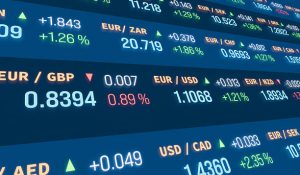 Mastering Volatility: How to Trade Big Swings with Confidence.
Mastering Volatility: How to Trade Big Swings with Confidence.
In the fast-paced world of Forex, price swings can either make or break a trader. Mastering market volatility isn’t just an advanced skill it’s essential for growing your account and protecting your capital. If you’ve been struggling to ride the waves of high impact moves, this article is your roadmap to confidence and consistency.
Before we dive in, check out this related freelancing guide to secure your online income: Niching Down in Freelancing for Success.
Let’s get into how you can master market swings and turn volatility into opportunity.
Understanding Volatility in Forex Trading
Volatility refers to how much price moves in a given time. In Forex, it’s influenced by news events, economic reports, and global market sentiment. Traders who embrace volatility can find countless opportunities to profit but only when backed with strategy and discipline.
Volatility doesn’t always mean risk; it also means potential. And if you’re prepared, big swings often present the best setups.
Why Volatility Trading Requires Confidence
Confidence in volatile markets comes from preparation. It’s not about predicting the next move but being ready for any move.
Here’s why mastering volatility builds stronger traders:
-
Fast Decisions: Volatile markets don’t wait. You must act quickly and decisively.
-
Better Risk Management: You learn to set stops and targets smartly, rather than emotionally.
-
Increased Profit Potential: Big moves mean bigger rewards if you catch them right.
Tools for Trading Market Swings Confidently
To trade big swings like a pro, equip yourself with reliable tools. Below are must-haves:
1. Volatility Indicators
Some key volatility indicators include:
-
Average True Range (ATR): Measures how much price typically moves. It helps you set realistic stop-loss and take-profit levels.
-
Bollinger Bands: These expand and contract with volatility, showing breakout potential.
-
Moving Averages: While not volatility indicators, they help filter trades during rapid price action.
2. Price Action Tools
Candlestick patterns and trend lines become even more important in high-volatility conditions. Mastering wicks, pin bars, and engulfing candles helps you identify reversals and continuations with precision.
For better entry and exit accuracy, check out:
👉 Using Fibonacci Indicator in Forex: Smart Entries & Exits
Best Times to Trade Big Swings
Not all trading hours are equal. To catch high-volatility movements, trade during overlapping sessions:
-
London/New York Overlap (1PM–4PM WAT): Highest liquidity and biggest moves.
-
Major News Releases: Economic reports like NFP, interest rate decisions, and CPI can move the market significantly.
Set alerts and use an economic calendar. That’s how pros stay ahead of the market.
Risk Management During Big Swings
Mastering Volatility in Forex is not about gambling it’s about control. Here’s how to manage your risk wisely:
1. Use a Proper Stop-Loss
Avoid trading without a stop. Let your volatility indicators guide your stop-loss placement. Always ask: “How much am I willing to lose if this swing goes against me?”
2. Adjust Your Position Size
Don’t go big during volatile markets. Smaller positions with wide stops often outperform big bets with tight stops.
3. Stick to a Risk-Reward Ratio
Maintain a minimum 1:2 risk-reward ratio. This means if you risk $50, aim to make at least $100. Consistency here is key to long-term success.
Developing a Swing Trading Mindset
Swing trading volatile markets requires a mix of patience and precision. Unlike scalpers who chase every pip, swing traders wait for perfect setups.
Use these mental strategies:
-
Stay Emotionally Detached: Don’t fall in love with a trade. Let the chart tell you what’s next.
-
Be Comfortable with Waiting: Sometimes, not trading is the best trading.
-
Journal Every Trade: Document why you entered, exited, and what you learned.
This discipline will sharpen your instincts.
Common Mistakes to Avoid
To trade big swings with confidence, avoid these pitfalls:
-
Overtrading: More trades don’t mean more profit.
-
Ignoring Market News: News drives volatility. Don’t get caught off guard.
-
Setting Unrealistic Targets: Big swings can tempt you to aim too high. Stay grounded.
Successful traders know that less is often more.
Mastering Volatility Can Multiply Your Edge
Mastering Volatility in Forex: When you understand volatility, you no longer fear it — you leverage it. Whether you trade breakouts, reversals, or pullbacks, you must recognize how the market breathes.
Always remember:
-
Plan the trade.
-
Use your tools.
-
Protect your capital.
If you stay disciplined, volatile moves will become your friend not your enemy.
Conclusion: Become a Confident Swing Trader
Mastering Volatility in Forex can be your best ally when traded with wisdom. If you equip yourself with the right tools, respect risk, and stay consistent, you can ride the biggest swings with full confidence.
Ready to elevate your game? Read more on this beginner-friendly guide to solidify your Forex journey:
👉 Forex Trading for Beginners: A Right Way to Getting Started
Let’s grow together — visit https://fxfreelancehub.com for more expert tips and real strategies.
🔗 Connect with me on:
-
Instagram: https://www.instagram.com/shine.dubic
-
Facebook Group: https://web.facebook.com/profile.php?id=100072302632130&sk=about